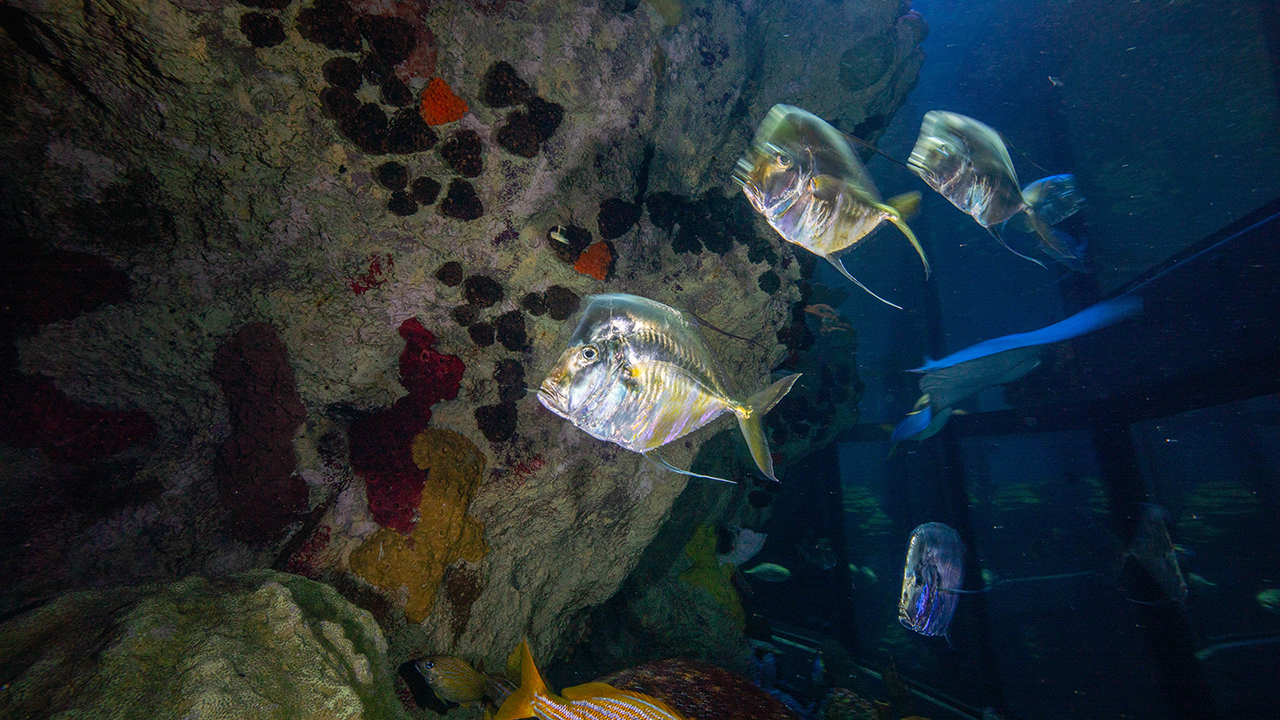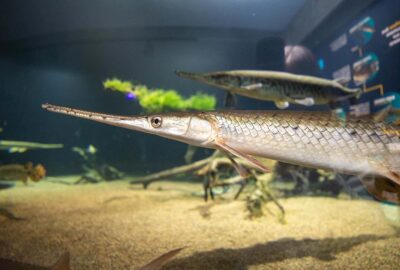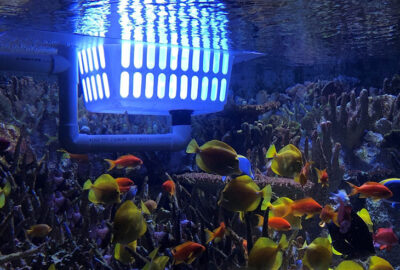Counting Fish Isn’t Just for Kids’ Stories
Learn how we count hundreds of fish in the Giant Ocean Tank—and why it’s an important practice for animal health.
By New England Aquarium on Thursday, June 12, 2025


How many fish do you think live in the four-story Giant Ocean Tank, the largest exhibit at the New England Aquarium? How many of each species? And what about the other animals in the ecosystem, like turtles and cownose rays? How would you go about answering those questions?
It’s not as easy as Dr. Seuss’s One Fish Two Fish Red Fish Blue Fish makes it sound, but the Aquarium’s fish census does involve some good old-fashioned counting.

History of the fish census
For years, a single large fish census took place at the Aquarium each December. Giant Ocean Tank staff divers would start by listing every species in the exhibit on a big paper spreadsheet tacked to the wall. Then, one by one, they’d dive into the tank with underwater slates and pencils to tally the fish. Once everyone had completed their counts, the team would compare numbers. If there were discrepancies, they’d talk through them until they reached a consensus, and the chart would be updated accordingly for the year.
Using this system, fish population estimates could fluctuate significantly from year to year, including times when the count was lower than expected for no clear reason. Natural predation occasionally occurs in the Giant Ocean Tank ecosystem, but only so much can be blamed on our exhibit predators.
How we count fish today
To keep a closer eye on animal health and wellbeing, data collection for the fish census evolved into a rolling process around 2017. The introduction of Tracks®, a software program specifically designed for gathering data in aquariums and zoos, enabled staff to maintain a comprehensive digital record of animals in each exhibit. Each of the five Giant Ocean Tank staff members is responsible for tracking about 12 to 15 of the 70 species in the exhibit.
For easy-to-identify animals—like Brodie the barracuda, Myrtle the green sea turtle, and others—the process is straightforward. The team already checks in on them daily during target feeding and enrichment activities, so counting is simple.
Other fish are counted monthly. For many populations in the single digits, staff can identify and tally individuals based on differences in size, coloration, and markings

Counting the many, the speedy, and the sneaky
For some species—like the roughly 120 lookdowns and hundreds of smallmouth grunts from the Aquarium’s aquaculture program—counting gets trickier. Fortunately, staff use their knowledge of the fishes’ natural behaviors to their advantage. Smallmouth grunts, for instance, tend to spread out across different areas of the exhibit. To count them, a diver records a GoPro video from above. Screenshots from the video are uploaded to ImageJ, a scientific image analysis program, and staff click to count the fish as accurately as possible.
Lookdowns, meanwhile, are almost always swimming laps around the exhibit. An overhead video would only capture about a third of the school. Instead, a diver floats just below the surface and waits for a lookdown with a distinctive feature to swim by. They start counting with that fish and stop once it circles around again—so that, ideally, each fish is only counted once. This process is repeated three times, and the average of the three counts is used for the most accurate estimate.
Territorial species, like damselfish, usually pick a spot and stay put, making them easier to count than species that cruise around the exhibit like spotfin butterflyfish. Ambush predators like graysby groupers are perhaps the toughest of all because they’re naturally skilled at hiding in the shadows! In these cases, the staff often wait for a few months of consistent counts before officially updating the census, just in case a fish is simply laying low.
Why we count fish
The fish census matters for a number of reasons. First and foremost, it allows the team to monitor the wellbeing of the animals.

“Pretend you have a house full of cats at home. They’re your babies, right? You want to take care of them,” said Chris Bauernfeind, manager of the Giant Ocean Tank. “They’re under our care, and we want to give them the best care possible.”
Understanding population trends helps guide decisions about the Giant Ocean Tank exhibit. For example, when the fish census revealed a decline in the blue and brown chromis, the team investigated and determined that adding those species to the exhibit was no longer the best fit. Staff keep lists of all the species that have thrived—or struggled—in the Giant Ocean Tank’s Caribbean reef environment, using that data to develop an Exhibit Collection Plan: a roadmap for which species to add in the coming year. It also helps gauge whether the exhibit can accommodate fish that other aquariums request to rehome.
“A direct result of all of this information that we’ve collected over the years is the sweet spot of total fish in the Giant Ocean Tank is around 600, give or take 100,” Chris said. Instead of trying to increase the number of fish, the team focuses on healthy reef diversity.
So, back to the question: how many fish do you think are in the Giant Ocean Tank exhibit? Well, as of June 10, 2025, the total number was 411, with plans to add about 300 smallmouth grunts this summer. But the rolling census goes on! The next time you visit the New England Aquarium, try your hand at fish counting with our Giant Ocean Tank census worksheet!




